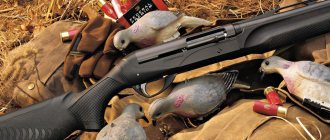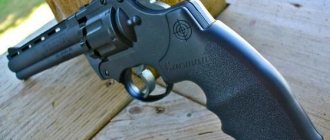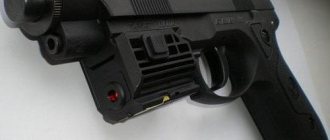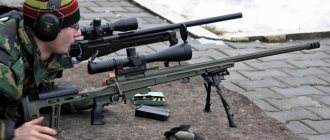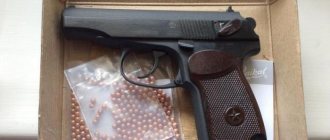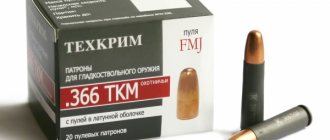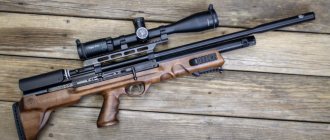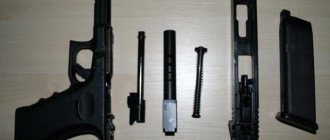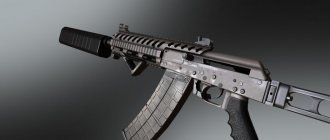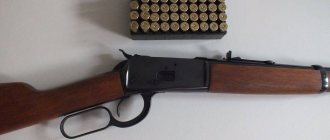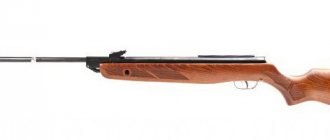In the mid-1930s. The USSR Navy was to receive light cruisers, which were supposed to be equipped with ejection reconnaissance aircraft. In 1930, an imported catapult was installed on the battleship Paris Commune, and DH-55 flying boats (domestic designation KR-1) were purchased for it. To equip new ships and replace the KR-1, it was necessary to create domestic catapults and aircraft for them. The initially designed reconnaissance aircraft was designated KR-2, and then KOR-1. In June 1934, requirements were put forward for the Naval Reconnaissance Unit, which ended up in Brigade No. 5 of the Central Design Bureau, which was engaged in naval aircraft. It was headed by G.M. Beriev.
G.M. Beriev had to solve a very difficult task: to create a machine that met the strict requirements of the military. The requirements stipulated the design of the new reconnaissance aircraft: “Single-float seaplane or flying boat.” KOR-1 was assigned the following tasks: aerial reconnaissance, adjusting naval artillery fire, bombing and diving attack with machine-gun fire. The seaplane had to have good seaworthiness, land on the open sea and have a corrosion-resistant metal frame. According to the ship-based conditions, its wings had to be folded, and in this state the dimensions of the aircraft should not exceed 5 m in width, 11 m in length, and 4 m in height. Design assignment by G.M. Beriev received on August 9, 1934. On this day, a government decision was made to create the Central Design Bureau of Marine Aircraft (TsKB MS) at the aircraft plant No. 31 in Taganrog. The designed aircraft received the internal designation TsKB MS-3, it had to be submitted for state tests on October 1, 1935. On November 22, 1934, the preliminary design of a single-float biplane was approved and agreed upon by Ya.I. Alksnis. The aircraft, if desired by the customer, could be used on a wheeled chassis or skis. After the aircraft model was approved in December 1935, construction of the prototype began.
KOR-1 (Be-2) became the first aircraft with a metal frame in the practice of TsKB MS. Instead of the previously planned installation of the American Wright Cyclone engine on the aircraft, a domestic licensed analogue of the M-25 was installed, this led to a slight decrease in the design characteristics. The aircraft was armed with three ShKAS machine guns, two of which were located in the fairings on the center section of the upper wing, and the third in the pilot-observer cockpit. On September 4, 1936, the prototype aircraft made its first flight (test pilot P.A. Noman). During testing, the aircraft showed good data, but had insufficient stability on water in crosswinds due to the small volume of the underwing floats. After factory tests, the aircraft was sent for modification and installation of a land landing gear. Tests in this version were also carried out by P.A. Noman. During these flights, vibration of the tail surfaces was again observed, as on the naval version. To see this phenomenon with his own eyes, G.M. himself sat in the observer’s cockpit. Beriev. After landing, he gave instructions to strengthen the tail section with bracing tapes, and install struts under the stabilizer. The state tests carried out revealed many shortcomings, and according to the military, the aircraft could not be accepted for service. But nevertheless, it was accepted into service as a transitional vehicle. Several aircraft took part in the Patriotic War, but the aircraft was never used for its intended purpose as a naval reconnaissance and spotter aircraft. Nevertheless, KOR-1 (Be-2) became the first domestic seaplane specifically designed for launch from ship catapults.
And what comes in the basic package?
This device has good, but not flawless, equipment. The list of accessories, in addition to the gadget itself, includes:
- Rechargeable battery with a nominal capacity of 2000 mAh.
- Interface cord.
- Charger with 0.7 A output current signal.
Conspicuously missing from this list is a stereo headset. This situation is typical for an entry-level device. Therefore, acoustics will have to be purchased separately. And without it, the radio will not function - headphones, in addition to their main function - playing a sound signal, in this case they also act as an antenna. The body is made entirely of plastic. Therefore, you will also need an additional case and a protective film for the front panel. Well, a flash card would be useful in this smartphone.
Documentation includes:
- Warranty card.
- A business card of the South Korean giant, which contains all contact details of service centers.
- User guide.
- Expanded list of supported accessories.
Phone appearance and usability
Samsung DUOS 2 SIM smartphones have a fairly similar design, and it is very difficult to confuse them with devices from other manufacturers. The front panel of this device has a 4.5-inch display. Above it are located components such as the earpiece, front camera and sensors. At the bottom there are three main control keys. The central one is mechanical, and those located along the edges are sensory. The top edge has a standard audio port, the bottom edge has a conversational microphone and a MicroUSB standard port. On the right side of the device there is a power button, and on the left there is a swing for adjusting the volume level. The display diagonal, as noted earlier, of this device is 4.5 inches. Accordingly, operating it with one hand is not difficult.
Aircraft Beriev Be-4 (KOR-2) - registry
| type | head n. | s/n | p/p | onboard | operator | status | noticed | * | |||||||||
| Be-4 (KOR-2) | 310001 | 1940 | USSR - MAP | cut | First prototype. Serial number - presumably. Built at plant No. 31 NKAP im. G. Dimitrova (Taganrog) October 2, 1940 The first taxiing and jogging began in the water area of the plant No. 31 hydraulic base. First flight October 21, 1940, test pilot N.P. Kotyakov Since December 8, 1940 until January 21, 1941 continuation of factory tests in Sevastopol. Pilots N.P. Kotyakov and I.M. Sukhomlin. From February 2 to February 18, 1941 - state tests in Sevastopol at the base of the RKKF Air Force Flight Research Institute. Test pilot captain S.B. Reidel. From July 23 to August 6, 1941 — state tests of the Be-4 aircraft and the ZK-1 catapult. First catapult flight July 31, 1941. in the Oranienbaum area. Test pilot captain S.B. Reidel Further history is unknown. | ||||||||||||
| Be-4 (KOR-2) | 310002 | 1940 | 2 | USSR - MAP | cut | Second prototype. Serial number - presumably. Built at plant No. 31 NKAP im. G. Dimitrova (Taganrog) Since December 8, 1940 until January 21, 1941 — factory tests in Sevastopol. Pilots N.P. Kotyakov and I.M. Sukhomlin. From February 2 to February 18, 1941 - state tests in Sevastopol at the base of the RKKF Air Force Flight Research Institute. Test pilot captain S.B. Reidel, weapons tests were carried out by P.Ya. Yakovlev.
| |||||||||||
| Be-4 (KOR-2) | 28801 | 1941 | USSR - MAP | catastrophe | The first production aircraft. Built at the NKAP plant No. 288 (Savelovsky machine-building plant No. 288 (Kimry, Kalinin region). Unlike the experimental aircraft, this aircraft was equipped with a less powerful (1000 hp), but long-lasting M-62 engine. Some improvements were made to the design and equipment of the aircraft - an emergency reset mechanism for the cockpit canopy was added, an armored backrest was installed, the RSRM-3 radio station was replaced by RSBM-bis, and the AFA-27 camera was replaced by the AFA-27T. | ||||||||||||
| Be-4 (KOR-2) | 28802 | 1941 | Russia (USSR) - Navy | cut | Second production aircraft. Built at plant No. 288 NKAP (Savelovsky machine-building plant No. 288 (Kimry, Kalinin region) From September 14 to October 10, 1941, 49 test flights were performed with a flight time of 10 hours 3 minutes. Test pilot Captain S.B. Reidel , navigators G.A. Yudin and N.D. Zabavin Since the summer of 1942 - KChF Air Force. Further history is unknown. | ||||||||||||
| Be-4 (KOR-2) | 28803 | 1942 | Russia (USSR) - Navy | cut | The history of the aircraft is unknown. Presumably, the aircraft was assembled at plant No. 166 (Omsk) from the stock brought from plant No. 288 (Kimry). Presumably since the summer of 1942. - KChF Air Force. | ||||||||||||
| Be-4 (KOR-2) | 28804 | 1942 | Russia (USSR) - Navy | cut | The history of the aircraft is unknown. The aircraft was assembled at plant No. 166 (Omsk) from the stock brought from plant No. 288 (Kimry). Presumably since the summer of 1942. - KChF Air Force. | ||||||||||||
| Be-4 (KOR-2) | 28805 | 1942 | Russia (USSR) - Navy | cut | The history of the aircraft is unknown. The aircraft was assembled at plant No. 166 (Omsk) from the stock brought from plant No. 288 (Kimry). Presumably since the summer of 1942. - KChF Air Force. | ||||||||||||
| Be-4 (KOR-2) | 28806 | 1942 | Russia (USSR) - Navy | cut | The history of the aircraft is unknown. The aircraft was assembled at plant No. 166 (Omsk) from stock brought from plant No. 288 (Kimry). | ||||||||||||
| Be-4 (KOR-2) | 28807 | 1942 | Russia (USSR) - Navy | cut | The aircraft was assembled at plant No. 166 (Omsk) from stock brought from plant No. 288 (Kimry). The aircraft was equipped with RO-82 missile guns for RS-82 missiles (four RO-82 missile guns under each wing console, on all subsequent Be-4s their number was reduced to two). The further history is unknown. | ||||||||||||
| Be-4 (KOR-2) | 4770204 | 1944 | Russia (USSR) - Navy | catastrophe | The aircraft was built at plant No. 477 NKAP (Krasnoyarsk). Entered the 29th separate reconnaissance squadron of the Red Banner Baltic Fleet Air Force. | ||||||||||||
| Be-4 (KOR-2) | 28808 | 1942 | Russia (USSR) - Navy | cut | The aircraft was assembled at plant No. 166 (Omsk) from stock brought from plant No. 288 (Kimry). Entered the 115th Marine Short-Rise Reconnaissance Aviation Regiment of the Pacific Fleet Air Force. He did not take part in hostilities against Japan. After the end of the war - flights from the catapults of the Pacific Fleet cruisers "Kalinin" and "Kaganovich", as ship reconnaissance aircraft. The further history is unknown. | ||||||||||||
| Be-4 (KOR-2) | 28809 | 1942 | Russia (USSR) - Navy | cut | The aircraft was assembled at plant No. 166 (Omsk) from stock brought from plant No. 288 (Kimry). Entered the 115th Marine Short-Rise Reconnaissance Aviation Regiment of the Pacific Fleet Air Force. He did not take part in hostilities against Japan. After the end of the war - flights from the catapults of the Pacific Fleet cruisers "Kalinin" and "Kaganovich", as ship reconnaissance aircraft. The further history is unknown. | ||||||||||||
| Be-4 (KOR-2) | 28810 | 1942 | Russia (USSR) - Navy | cut | The aircraft was assembled at plant No. 166 (Omsk) from stock brought from plant No. 288 (Kimry). The history of the aircraft is unknown, more information is needed. | ||||||||||||
| Be-4 (KOR-2) | 28811 | 1943 | USSR-N330 | → Yenisei Air Group | cut | The aircraft was assembled at plant No. 166 (Omsk) from stock brought from plant No. 288 (Kimry). August 2, 1943 - anti-submarine patrol in the Dikson area, pilot V.V. Malkov. PLAB-100 anti-submarine bombs were used as weapons. The only combat engagement took place on August 28, when Be-4 N-330 and N-331 bombed the area (20 miles from Cape Sterligov) in which the Dixon transport was sunk by a German submarine. The pilots did not observe the results of the attack. At the end of September it became sharply cold and freeze-up began. Therefore, September 21, 1943 The crews ferried seaplanes along the Yenisei back to Krasnoyarsk. Flight time in the Arctic is 35 hours 15 minutes. November 13, 1943 the KOR-2 aircraft No. N-330 was registered in the USSR GVS register. The further history is unknown. | |||||||||||
| Be-4 (KOR-2) | 28812 | 1943 | USSR-N331 | → Yenisei Air Group | cut | The aircraft was assembled at plant No. 166 (Omsk) from stock brought from plant No. 288 (Kimry). August 2, 1943 - anti-submarine patrol in the Dikson area, pilot M.V. Teyman. PLAB-100 anti-submarine bombs were used as weapons. The only combat engagement took place on August 28, when Be-4 N-330 and N-331 bombed the area (20 miles from Cape Sterligov) in which the Dixon transport was sunk by a German submarine. The pilots did not observe the results of the attack. At the end of September it became sharply cold and freeze-up began. Therefore, September 21, 1943 The crews ferried seaplanes along the Yenisei back to Krasnoyarsk. Flight time in the Arctic is 31 hours 20 minutes. November 13, 1943 the KOR-2 aircraft No. N-331 was registered in the USSR GVS register. The further history is unknown. | |||||||||||
| Be-4 (KOR-2) | 4770101 | 1943 | Russia (USSR) - Navy | cut | The first production vehicle of plant No. 477 NKAP (Krasnoyarsk). The history of the aircraft is unknown, more information is needed. | ||||||||||||
| Be-4 (KOR-2) | 4770102 | 1943 | Russia (USSR) - Navy | cut | The aircraft was built at plant No. 477 NKAP (Krasnoyarsk). The history of the aircraft is unknown, more information is needed. | ||||||||||||
| Be-4 (KOR-2) | 4770103 | 1943 | Russia (USSR) - Navy | cut | The aircraft was built at plant No. 477 NKAP (Krasnoyarsk). The history of the aircraft is unknown, more information is needed. | ||||||||||||
| Be-4 (KOR-2) | 4770104 | 1943 | Russia (USSR) - Navy | cut | The aircraft was built at plant No. 477 NKAP (Krasnoyarsk). The history of the aircraft is unknown, more information is needed. | ||||||||||||
| Be-4 (KOR-2) | 4770105 | 1944 | Russia (USSR) - Navy | cut | The aircraft was built at plant No. 477 NKAP (Krasnoyarsk). Be-4 aircraft test program No. 4770105 Krasnoyarsk, January 18, 1944. I. Ground tests: Verification of overall dimensions (with wings folded and unfolded) and adjustment data of the aircraft; Weighing in the following options: a) empty; b) flight weight; Checking the wing folding and unfolding mechanism; Checking the position of the boat components for installing the aircraft on the ejection trolley; Testing bomber weapons: a) hang mock-ups of bombs (100 kg) with a BL-4 winch to check the grips and winch lifting; b) hang weights on the beam locks. Carry out a drop from the emergency release of the navigator and pilot; c) drop (weights) one at a time, two at a time, or all at once from the OPB-1M button (using squibs); d) release with squibs from the pilot's button. Note: Dropping should start from the outermost beams; Mid-mount shooting: a) prepare the weapon for shooting according to the instructions; b) place a belt for 100 rounds in the cartridge box; c) fire in short bursts of 3–5 rounds of 5 bursts; Zeroing the bow installation of machine guns: a) check the correctness and completeness of installation, pay special attention to adjusting the carriage springs; b) carry out cold zeroing of the weapon; c) check the capacity of both cartridge boxes in accordance with their specifications; d) place a belt with 40 cartridges in each cartridge box; e) fire in short bursts of 5 rounds from each machine gun in three bursts, if the power supply, cartridge outlet and link outlet work well, fire from two machine guns until the cartridges are completely used up; Testing the operation of the RSBM-bis radio station; Flight tests: Take-off, climb to 2,000 meters; Verification of the intercom SPU-2F; Fire five short bursts from each machine gun, then five bursts from both machine guns. During takeoff and landing, the pilot should pay attention to the “closed” position of the fuses. Note: Each cartridge box contains a belt with 100 cartridges; Make flights with installed marine equipment. Head of Quality Control Department signature Lozhechkin Deputy Chief Designer signature Trishkin Senior military representative engineer-captain signature Serebrennikov Head of LIS signature Bochkarev KSKU "GAKK". F.R-1341. Op. 4. D. 133. L. 2, 3. Original. Typescript. The further history of the aircraft is unknown. | ||||||||||||
| Be-4 (KOR-2) | 4770201 | 1944 | Russia (USSR) - Navy | cut | The aircraft was built at plant No. 477 NKAP (Krasnoyarsk). Entered the 115th Marine Short-Rise Reconnaissance Aviation Regiment of the Pacific Fleet Air Force. He did not take part in hostilities against Japan. After the end of the war - flights from the catapults of the Pacific Fleet cruisers "Kalinin" and "Kaganovich", as ship reconnaissance aircraft. The further history is unknown. | ||||||||||||
| Be-4 (KOR-2) | 4770203 | 1944 | Russia (USSR) - Navy | cut | The aircraft was built at plant No. 477 NKAP (Krasnoyarsk). Entered the 115th Marine Short-Rise Reconnaissance Aviation Regiment of the Pacific Fleet Air Force. He did not take part in hostilities against Japan. After the end of the war - flights from the catapults of the Pacific Fleet cruisers "Kalinin" and "Kaganovich", as ship reconnaissance aircraft. The further history is unknown. | ||||||||||||
| Be-4 (KOR-2) | 4770202 | 1944 | Russia (USSR) - Navy | cut | The aircraft was built at plant No. 477 NKAP (Krasnoyarsk). Starting with this vehicle, in addition to two tanks in the engine nacelle (No. 1-408 liters and No. 2-120 liters), all Be-4s began to be equipped with twin boat gas tanks with a capacity of 300 liters. The history of the aircraft is unknown, more information is needed. | ||||||||||||
| Be-4 (KOR-2) | 4770205 | 1944 | Russia (USSR) - Navy | cut | The aircraft was built at plant No. 477 NKAP (Krasnoyarsk). Flight at the plant in April 1944. Entered the 29th ORAE of the Baltic Fleet Air Force in July 1944. The further history is unknown. | ||||||||||||
| Be-4 (KOR-2) | 4770301 | 1944 | Russia (USSR) - Navy | cut | The aircraft was built at plant No. 477 NKAP (Krasnoyarsk). Entered the 29th separate reconnaissance squadron of the Red Banner Baltic Fleet Air Force in July 1944. The further history is unknown. | ||||||||||||
| Be-4 (KOR-2) | 4770302 | 1944 | Russia (USSR) - Navy | cut | The aircraft was built at plant No. 477 NKAP (Krasnoyarsk). Entered the 29th separate reconnaissance squadron of the Red Banner Baltic Fleet Air Force in July 1944. The further history is unknown. | ||||||||||||
| Be-4 (KOR-2) | 4770303 | 1944 | Russia (USSR) - Navy | cut | The aircraft was built at plant No. 477 NKAP (Krasnoyarsk). Entered the 29th separate reconnaissance squadron of the Red Banner Baltic Fleet Air Force in July 1944. The further history is unknown. | ||||||||||||
| Be-4 (KOR-2) | 4770304 | 1944 | USSR - MAP | catastrophe | The aircraft was built at plant No. 477 NKAP (Krasnoyarsk). The history of the aircraft is unknown, more information is needed. | ||||||||||||
| Be-4 (KOR-2) | 4770305 | 1944 | Russia (USSR) - Navy | cut | The aircraft was built at plant No. 477 NKAP (Krasnoyarsk). The plane serves as a standard for the series. Factory tests from August 11 to October 7, 1944. Starting with this vehicle, a new system for filling gas tanks with neutral gas was introduced on the Be-4. Another oil cooler was added to the oil system, located on the lower surface of the wing center section to the left of the engine nacelle. Once again, small arms fire has increased. Instead of a tail turret with a ShKAS, a VUB-3 turret with a large-caliber (12.7 mm) UBT machine gun was installed. At the same time, the take-off weight exceeded three tons, as a result one UBK machine gun had to be removed. Entered the 29th separate reconnaissance squadron of the Red Banner Baltic Fleet Air Force. The further history is unknown. | ||||||||||||
| Be-4 (KOR-2) | 4770401 | 1944 | Russia (USSR) - Navy | cut | The aircraft was built at plant No. 477 NKAP (Krasnoyarsk). Entered the 29th separate reconnaissance squadron of the Red Banner Baltic Fleet Air Force. The further history is unknown. | ||||||||||||
| Be-4 (KOR-2) | 4770402 | 1944 | Russia (USSR) - Navy | cut | The aircraft was built at plant No. 477 NKAP (Krasnoyarsk). Entered the 29th separate reconnaissance squadron of the Red Banner Baltic Fleet Air Force. The further history is unknown. | ||||||||||||
| Be-4 (KOR-2) | 4770403 | 1944 | Russia (USSR) - Navy | cut | The aircraft was built at plant No. 477 NKAP (Krasnoyarsk). Entered the 29th separate reconnaissance squadron of the Red Banner Baltic Fleet Air Force. The further history is unknown. | ||||||||||||
| Be-4 (KOR-2) | 4770404 | 1944 | Russia (USSR) - Navy | cut | The aircraft was built at plant No. 477 NKAP (Krasnoyarsk). Entered the 29th separate reconnaissance squadron of the Red Banner Baltic Fleet Air Force. The further history is unknown. | ||||||||||||
| Be-4 (KOR-2) | 4770405 | 1944 | Russia (USSR) - Navy | cut | The aircraft was built at plant No. 477 NKAP (Krasnoyarsk). Entered the 29th separate reconnaissance squadron of the Red Banner Baltic Fleet Air Force. The further history is unknown. | ||||||||||||
| Be-4 (KOR-2) | 4770501 | 1945 | Russia (USSR) - Navy | cut | The aircraft was built at plant No. 477 NKAP (Krasnoyarsk). The history of the aircraft is unknown. Need more information. | ||||||||||||
| Be-4 (KOR-2) | 4770502 | 1945 | Russia (USSR) - Navy | cut | The aircraft was built at plant No. 477 NKAP (Krasnoyarsk). The history of the aircraft is unknown. Need more information. | ||||||||||||
| Be-4 (KOR-2) | 4770503 | 1945 | Russia (USSR) - Navy | cut | The aircraft was built at plant No. 477 NKAP (Krasnoyarsk). The history of the aircraft is unknown. Need more information. | ||||||||||||
| Be-4 (KOR-2) | 4770504 | 1945 | Russia (USSR) - Navy | cut | The aircraft was built at plant No. 477 NKAP (Krasnoyarsk). The history of the aircraft is unknown. Need more information. | ||||||||||||
| Be-4 (KOR-2) | 4770505 | 1945 | Russia (USSR) - Navy | cut | The aircraft was built at plant No. 477 NKAP (Krasnoyarsk). The history of the aircraft is unknown. Need more information. | ||||||||||||
| Be-4 (KOR-2) | 4770601 | 1945 | Russia (USSR) - Navy | cut | The aircraft was built at plant No. 477 NKAP (Krasnoyarsk). The history of the aircraft is unknown. Need more information. | ||||||||||||
| Be-4 (KOR-2) | 4770602 | 1945 | Russia (USSR) - Navy | cut | The aircraft was built at plant No. 477 NKAP (Krasnoyarsk). The history of the aircraft is unknown. Need more information. | ||||||||||||
| Be-4 (KOR-2) | 4770603 | 1945 | Russia (USSR) - Navy | cut | The aircraft was built at plant No. 477 NKAP (Krasnoyarsk). The history of the aircraft is unknown. Need more information. | ||||||||||||
| Be-4 (KOR-2) | 4770604 | 1945 | Russia (USSR) - Navy | cut | The aircraft was built at plant No. 477 NKAP (Krasnoyarsk). The history of the aircraft is unknown. Need more information. | ||||||||||||
| Be-4 (KOR-2) | 4770605 | 1945 | Russia (USSR) - Navy | cut | The aircraft was built at plant No. 477 NKAP (Krasnoyarsk). The history of the aircraft is unknown. Need more information. | ||||||||||||
| Be-4 (KOR-2) | 4770701 | 1945 | Russia (USSR) - Navy | cut | The aircraft was built at plant No. 477 NKAP (Krasnoyarsk). The history of the aircraft is unknown. Need more information. | ||||||||||||
| Be-4 (KOR-2) | 4770702 | 1945 | Russia (USSR) - Navy | cut | The aircraft was built at plant No. 477 NKAP (Krasnoyarsk). Summer 1946 The aircraft took part in experimental tests of launches from the catapult of the cruiser Kaganovich in the overload version and tests of the ZK-2a catapult of the cruiser Kalinin. The aircraft was equipped with special components for ejection launch—trunnions and rear hooks. The pilot's cabin was equipped with devices to ensure the correct position of the pilot and navigator in the cockpit during takeoff: armrests, thrust bearings and headrests. In total, from the catapult of the cruiser "Kalinin", in the period from July 3 to July 12, 32 launches were made with a blank and 13 launches with an aircraft in the ship's parking lot at different wind strengths and with different flight weights. From the cruiser "Kaganovich" from August 16 to 28, five launches were made while the ship was moving at an ejection speed of 130 km/h and a maximum acceleration of up to 4.5g. Of these, one launch with an aircraft flight weight of 3200 kg and four launches in an overload version, with a flight weight of 3345 kg. Test pilot captain V.F. Sokolov. The further history is unknown. | ||||||||||||
| Be-4 (KOR-2) | 4770703 | 1945 | Russia (USSR) - Navy | cut | The aircraft was built at plant No. 477 NKAP (Krasnoyarsk). “Act of readiness of Be-4 aircraft, Krasnoyarsk, November 1, 1945. This act was drawn up by the production manager of plant No. 477, comrade. Toropov, head of Quality Control Comrade. Bochkarev, technical receiver of the UPA GU SMP comrade. Metrikas and the military representative of the Navy Air Force at plant No. 477, captain comrade. Rybin regarding the readiness of the Be-4 aircraft as of November 1, 1945: ... Be-4 aircraft No. 4770703 The aircraft was dismantled and handed over to the military representative. Does not include a screw. Located on Zlobino...” (railway station in Krasnoyarsk) Further history is unknown. | ||||||||||||
| Be-4 (KOR-2) | 4770704 | 1945 | Russia (USSR) - Navy | cut | The aircraft was built at plant No. 477 NKAP (Krasnoyarsk). “Act of readiness of Be-4 aircraft, Krasnoyarsk, November 1, 1945. This act was drawn up by the production manager of plant No. 477, comrade. Toropov, head of Quality Control Comrade. Bochkarev, technical receiver of the UPA GU SMP comrade. Metrikas and the military representative of the Navy Air Force at plant No. 477, captain comrade. Rybin regarding the readiness of Be-4 aircraft as of November 1, 1945: ... Be-4 aircraft No. 4770704 The aircraft is disassembled and packed in workshop No. 7 for units. Not equipped with a propeller...” The further history is unknown. | ||||||||||||
| Be-4 (KOR-2) | 4770705 | 1945 | Russia (USSR) - Navy | cut | The aircraft was built at plant No. 477 NKAP (Krasnoyarsk). “Act of readiness of Be-4 aircraft, Krasnoyarsk, November 1, 1945. This act was drawn up by the production manager of plant No. 477, comrade. Toropov, head of Quality Control Comrade. Bochkarev, technical receiver of the UPA GU SMP comrade. Metrikas and the military representative of the Navy Air Force at plant No. 477, captain comrade. Rybin regarding the readiness of Be-4 aircraft as of November 1, 1945: ... Be-4 aircraft No. 4770705 The aircraft is disassembled and packed in workshop No. 7 for units. Not equipped with a propeller...” The further history is unknown. | ||||||||||||
| Be-4 (KOR-2) | 4770801 | 1945 | Russia (USSR) - Navy | cut | The aircraft was built at plant No. 477 NKAP (Krasnoyarsk). “Act of readiness of Be-4 aircraft, Krasnoyarsk, November 1, 1945. This act was drawn up by the production manager of plant No. 477, comrade. Toropov, head of Quality Control Comrade. Bochkarev, technical receiver of the UPA GU SMP comrade. Metrikas and the military representative of the Navy Air Force at plant No. 477, captain comrade. Rybin regarding the readiness of Be-4 aircraft as of November 1, 1945: ... Be-4 aircraft No. 4770801 The aircraft is disassembled and packaged in workshop No. 7 for units. Not equipped with a propeller...” The further history is unknown. | ||||||||||||
| Be-4 (KOR-2) | 4770802 | 1945 | Russia (USSR) - Navy | cut | The aircraft was built at plant No. 477 NKAP (Krasnoyarsk). “Act of readiness of Be-4 aircraft, Krasnoyarsk, November 1, 1945. This act was drawn up by the production manager of plant No. 477, comrade. Toropov, head of Quality Control Comrade. Bochkarev, technical receiver of the UPA GU SMP comrade. Metrikas and the military representative of the Navy Air Force at plant No. 477, captain comrade. Rybin regarding the readiness of Be-4 aircraft as of November 1, 1945: ... Be-4 aircraft No. 4770802 The aircraft has been disassembled and is located in workshop No. 5 for units. Not equipped with a propeller...” The further history is unknown. | ||||||||||||
| Be-4 (KOR-2) | 4770803 | 1945 | Russia (USSR) - Navy | cut | The aircraft was built at plant No. 477 NKAP (Krasnoyarsk). “Act of readiness of Be-4 aircraft, Krasnoyarsk, November 1, 1945. This act was drawn up by the production manager of plant No. 477, comrade. Toropov, head of Quality Control Comrade. Bochkarev, technical receiver of the UPA GU SMP comrade. Metrikas and the military representative of the Navy Air Force at plant No. 477, captain comrade. Rybin regarding the readiness of the Be-4 aircraft as of November 1, 1945: ... Be-4 aircraft No. 4770803 The propeller-engine group is being tested. Not equipped with a propeller...” The further history is unknown. | ||||||||||||
| Be-4 (KOR-2) | 4770804 | 1945 | USSR - MAP | other | The aircraft was built at plant No. 477 NKAP (Krasnoyarsk). “Act of readiness of Be-4 aircraft, Krasnoyarsk, November 1, 1945. This act was drawn up by the production manager of plant No. 477, comrade. Toropov, head of Quality Control Comrade. Bochkarev, technical receiver of the UPA GU SMP comrade. Metrikas and the military representative of the Navy Air Force at plant No. 477, captain comrade. Rybin regarding the readiness of Be-4 aircraft as of November 1, 1945: ... Be-4 aircraft No. 4770804 Located in workshop No. 5. Not equipped with a propeller...” The plane was not completed. The further history is unknown. | ||||||||||||
| Be-4 (KOR-2) | 4770805 | 1945 | USSR - MAP | other | The aircraft was built at plant No. 477 NKAP (Krasnoyarsk). “Act of readiness of Be-4 aircraft, Krasnoyarsk, November 1, 1945. This act was drawn up by the production manager of plant No. 477, comrade. Toropov, head of Quality Control Comrade. Bochkarev, technical receiver of the UPA GU SMP comrade. Metrikas and the military representative of the Navy Air Force at plant No. 477, captain comrade. Rybin regarding the readiness of Be-4 aircraft as of November 1, 1945: ... Be-4 aircraft No. 4770805 Located in workshop No. 5. Not equipped with a propeller...” The plane was not completed. The further history is unknown. | ||||||||||||
| Be-4 (KOR-2) | 4770901 | 1945 | USSR - MAP | other | The aircraft was built at plant No. 477 NKAP (Krasnoyarsk). “Act of readiness of Be-4 aircraft, Krasnoyarsk, November 1, 1945. This act was drawn up by the production manager of plant No. 477, comrade. Toropov, head of Quality Control Comrade. Bochkarev, technical receiver of the UPA GU SMP comrade. Metrikas and the military representative of the Navy Air Force at plant No. 477, captain comrade. Rybin regarding the readiness of Be-4 aircraft as of November 1, 1945: ... Be-4 aircraft No. 4770901 Located in workshop No. 5. Not equipped with a propeller...” The plane was not completed. The further history is unknown. | ||||||||||||
| Be-4 (KOR-2) | 4770902 | 1945 | USSR - MAP | other | The aircraft was built at plant No. 477 NKAP (Krasnoyarsk). “Act of readiness of Be-4 aircraft, Krasnoyarsk, November 1, 1945. This act was drawn up by the production manager of plant No. 477, comrade. Toropov, head of Quality Control Comrade. Bochkarev, technical receiver of the UPA GU SMP comrade. Metrikas and the military representative of the Navy Air Force at plant No. 477, captain comrade. Rybin regarding the readiness of Be-4 aircraft as of November 1, 1945: ... Be-4 aircraft No. 4770902 Is being assembled in workshop No. 5. Not a single installation is completely completed...” The plane was not completed. The further history is unknown. | ||||||||||||
| Operator: USSR - MAP status: | closed |
| date of foundation: | 1939.01.11 |
| closing date: | 1991.12.01 |
| codes: | IATA: - ICAO: - ext: |
comments:
| January 11, 1939 By the Decree of the Presidium of the Supreme Soviet of the USSR “On the division of the People's Commissariat of Defense Industry of the USSR”, the People's Commissariat of Aviation Industry (NKAP) of the USSR was formed from the First (aircraft) Directorate of the People's Commissariat of Defense Industry of the USSR on March 15, 1946. — The Ministry of Aviation Industry of the USSR is a Union-Republican ministry that managed the aviation industry in the Soviet Union. March 15, 1953 merged with the Ministry of Armaments of the USSR into one - the Ministry of Defense Industry of the USSR. It was re-established by the Decree of the Presidium of the Supreme Soviet of the USSR of August 24, 1953. December 14, 1957 abolished. On its basis, the State Committee of the Council of Ministers of the USSR on aviation technology was created. Formed for the third time on March 2, 1965. on the basis of the State Committee for Aviation Technology of the USSR. Abolished by the Decree of the USSR State Council of November 14, 1991, ceased its activities on December 1, 1991. |
| Operator: Russia (USSR) - Navy status: | active |
| date of foundation: | |
| codes: | IATA: - ICAO: - ext: |
| Operator: Aeroflot - MGA USSR status: | closed |
| date of foundation: | 1923.03.17 |
| closing date: | 1993 |
| codes: | IATA: SU ICAO: AFL ext: |
| Operator: Polar Aviation Management status: | closed |
| date of foundation: | 1932.12.17 |
| closing date: | 1970.09 |
| includes: | Aeroflot - MGA USSR |
| codes: | IATA: - ICAO: - ext: |
comments:
| December 17, 1932 - the Main Directorate of the Northern Sea Route was organized under the Council of People's Commissars of the USSR, within which the Air Service Directorate was formed (Order for the Main Northern Sea Route No. 10 of February 19, 1933), with the tasks of developing work plans for the State Emergency Service in the field of aviation, directly managing the work of airlines, air squads and aircraft repair facilities factories, conduct training for polar aviation through the school of naval pilots directly subordinate to him. April 1934 - the Ob, Yenisei and Lena airlines and the Chukotka air detachment of the Main Northern Sea Route were formed, a training detachment of the Air Force of the Main Directorate of the Northern Sea Route was created in 1935. - on the basis of the airlines, the Yenisei and Lena air groups of the GSMP were formed in 1936. — due to the significantly increased scale of tasks, area of responsibility and aviation fleet, the Air Service Directorate was transformed into the Polar Aviation Directorate of the Main Northern Sea Route (Resolution of the Council of People's Commissars of the USSR No. 1100 of June 22, 1936). The White Sea Air Squadron (disbanded in 1938), the Pacific Airlines of the Main Northern Sea Route and Moscow special purpose aviation squadron GSMP 1937 — the Ob Air Group of the Main Northern Sea Route was deployed on the basis of the Ob Airlines in 1938. — The Council of People's Commissars of the USSR decided to narrow the scope of activity of the Main Directorate of the Northern Sea Route in order to concentrate forces on a deeper study and development of the Northern Sea Route. Cargo transportation began to be transferred to the Civil Air Fleet, leaving ice reconnaissance and ship piloting to Polar Aviation. August 1938 — The Pacific air line of the UPA GSMP was transferred to the jurisdiction of the Civil Air Fleet, the Chukotka Autonomous Okrug became part of the UPA GSMP on August 29, 1938. - the Decree of the Council of People's Commissars of the USSR was issued “On the transfer of the State Air Fleet Obskaya and part of the Yenisei (from Krasnoyarsk to Igarka) airlines to the State Administration of the Northern Sea Route”, which provided that: “... the Yenisei airline is transferred from the jurisdiction of the State Administration of the Northern Sea Route to the jurisdiction of Aeroflot in the part from Krasnoyarsk to Igarka ( Igarka airport with its equipment remains under the jurisdiction of the Main Directorate of the Northern Sea Route)..." The Igarka air detachment of the Main Northern Sea Route was formed. All lines from Igarka to the North are assigned to Polar Aviation. December 1938 - on the basis of the Moscow Special Purpose Joint-Stock Company, the Moscow Special Purpose Air Group (MAGON) GSMP was formed in 1941. — on the basis of the Igarsk Autonomous District, the Igarsk air group of the UPA GSMP was formed April 1941. — Lenskaya AG Polar Aviation was disbanded, in May some of its aircraft were transferred to the formed Yakut Air Group of the Civil Air Fleet in 1942. - on the basis of the Chukotka Autonomous Okrug, the Chukotka Air Group of the Civil Aviation Fleet was formed, the Yenisei AG Civil Air Fleet was returned to the Main Directorate of the Civil Air Fleet (Order of the Council of People's Commissars of the USSR No. 11340-rs dated June 15, 1942) On May 21, 1945. The UPA GUSMP had 68 aircraft. December 1945 - The Yenisei air group of the UPA GU SMP is transferred to the Civil Air Fleet and on its basis the Krasnoyarsk Civil Air Fleet Directorate is created (Resolution of the Council of People's Commissars of the USSR No. 2823 of November 4, 1945) 1946. — with the organization of the high-latitude air expeditions “North”, the comprehensive study of the Central Arctic was resumed; air expeditions on “flying laboratories” with landing on drifting ice became the main means of exploring hard-to-reach areas of the Arctic Ocean. 1947 - the air group in Igarka received the designation Igara Air Transport Group (since 1953, again the Igara Air Group) March 1948. — The USSR Council of Ministers decided to build 14 airfields that meet the highest requirements throughout the Far North along the Northern Sea Route. September 1952 — the UPA received the first Mi-1 helicopter in 1954. — Mi-4 helicopters from 1955 were used for the first time in the Arctic. — 1st Soviet Antarctic Expedition. It included an air squadron that had specially equipped An-2, Li-2, Il-12 aircraft, Mi-4 helicopters. On the basis of the Chukotka AG and the Moscow AGON, the Chukotka separate and Moscow separate GSMP air squads were formed, the Igarsk AG was disbanded, and on its basis the Khatanga air detachment of the Main Northern Sea Route (disbanded in 1960) 1956 - the beginning of systematic ice aerial reconnaissance using icebreaker-based helicopters (Ka-15, Mi-4, Mi-1) and shore-based aircraft (Li-2, Il-14, equipped with on-board locators) April 1960. — Polar aviation of the Main Northern Sea Route of the Ministry of the Marine Fleet of the USSR was transferred to the jurisdiction of the Main Directorate of the Civil Air Fleet (Resolution of the USSR Council of Ministers No. 2-1 of January 3, 1960 and the joint order of the MMF and the State Administration of the Civil Air Fleet under the Council of Ministers of the USSR No. 39/012 of February 10, 1960) Moscow and Chukotka separate The GSMP air squads were disbanded, and on their basis (according to the system of assigning numbers to Civil Air Fleet squadrons), the 247th and 248th JSC UPA Civil Air Fleet were formed, respectively. The 247th JSC was relocated from the Zakharkovo airport to the Sheremetyevo airport. Khatanga Autonomous Okrug was disbanded, the structural unit “Khatanga Airport UPA Civil Air Fleet” was again formed December 1960. - on the basis of the 247th JSC, an additional 254th JSC UPA Civil Air Fleet was created, based in Sheremetyevo and Zakharkovo airports in 1962. - Tiksi UAE UPA Civil Air Fleet was formed at the Tiksi airport on July 12, 1963. - Nizhne-Kolyma OJSC UPA Civil Air Fleet was formed, a/p Chersky and 248th LO (Order of the State Administration of the Civil Air Fleet No. 072 of June 26, 1963) on July 27, 1964. — Polar Aviation Department of the USSR MGA September 15, 1964. — Polar Civil Aviation Administration (PUGA) of the USSR MGA 1967. - the Sheremetyevo united air squad was formed, 247th, 254th LO and Sheremetyevo airport, Bykovo airport 1968. - Khatanga UAE was formed at the Khatanga airport, ice aerial reconnaissance began to be carried out with the help of An-24 equipped with the Toros system of 1969. — Mys-Kamenskaya UAE was formed, merged with the Mys Kamenny airport on September 24, 1970. - MGA order No. 541 “On improving the management of aviation services in the Far North, Arctic and Antarctic regions”, according to which the Polar Administration of the Civil Aviation since January 1, 1971. was disbanded, and the tasks of “carrying out work on aviation services for the national economy and population of the Far North, as well as work on conducting ice reconnaissance and supporting high-latitude expeditions in the seas of the Northern Arctic”, “forming consolidated Antarctic air squads...” were assigned to six territorial departments of the Civil Aviation. Distribution of enterprises: - Northern UGA - base airport Amderma, assigned airports Ust-Kara and Nagurskaya - Tyumen UGA - Mys-Kamenskaya UAE, merged with the airport Cape Kamenny - Krasnoyarsk UGA - Khatanga UAE, merged with the airport Khatanga - Yakutsk State Administration - Nizhnekolymsk OJSC, Chersky airport and Chokurdakh airport, Tiksinskaya UAE, united with Tiksi airport and assigned airports Temp, Taimylyr and Bulun - Magadan State Administration - Shmidtovskaya UAE, united with Shmidt airport and assigned a/p Somnitelnaya Bay - Moscow Transport Administration of Civil Aviation - 247th LO (except for 10 An-12) - Transport Administration of International Air Lines GA - 10 An-12 247th LO, as well as ATB Sheremetyevsk OJSC (which is entrusted with technical maintenance of the SMP 254th LO) - Moscow Directorate of SP and MVL - 254th LO (while maintaining its base in Bykovo, then in Myachkovo) - Sheremetyevsk OJSC disbanded until October 15, 1970. - UTO-24 to be disbanded before October 15, 1970. |
| Operator: Yenisei Air Group status: | closed |
| date of foundation: | 1934.04 |
| closing date: | 1945.12 |
| includes: | Aeroflot - MGA USSR → Polar Aviation Administration |
| codes: | IATA: - ICAO: - ext: |
comments:
| April 1934 — the Yenisei Airlines of the Air Service Directorate of the Main Northern Sea Route was formed to serve the North and remote areas of the Krasnoyarsk Territory. It also included the Krasnoyarsk Hydroavian Base with the Krasnoyarsk Aircraft Repair Plant (KARZ) on May 29, 1935. - on the basis of the Yenisei Airlines and the Krasnoyarsk Air Service of the Main Directorate of the SMP, the Yenisei Air Group of the Directorate of the Air Service of the State Emergency Service was deployed June 1936. - Yenisei AG UPA Main Northern Sea Route December 1938 — The Yenisei Air Group was transferred from the Polar Aviation Directorate to the Civil Air Fleet (Order of the Civil Air Fleet Main Directorate No. 414 of December 21, 1938) on June 15, 1942. — The Yenisei air group was returned from the Civil Air Fleet to the jurisdiction of the Main Directorate of the Northern Sea Route. (Order of the Main Civil Air Fleet No. 140/r-72 dated June 23, 1942) Maintenance of the Krasnoyarsk - Igarka line with branches to Tura, Baykit, Kezhma and Sovrudnik. As of October 1942 in the Yenisei air group of the UPA GU SMP there were 6 G-1, 13 MP-1, 6 SP and one Ya-6 aircraft transferred from the Civil Air Fleet. May 1, 1943 – 6 G-1 and 1 P-5 aircraft, the Yenisei air group included 12 hydroports and 1 land airport. December 1944 — Yenisei AG aircraft fleet of 25 aircraft: 6 S-47, 4 MP-7 Consolidated, 5 SP, 6 G-1, two MP-1 and one G-2 and Stal-2 aircraft each. On May 21, 1945 in the Yenisei AG there were 23 aircraft: S-47, MP-7, MP-1, G-1, G-2, SP, S-2, Li-2, Shche-2, R-5, captured Yu-52 and Si-204 "Siebel". December 1945 — The Yenisei air group of the UPA of the Main Northern Sea Route is transferred to the Civil Air Fleet and on its basis the Krasnoyarsk Directorate of the Civil Air Fleet is created (Resolution of the Council of People's Commissars of the USSR No. 2823 of November 4, 1945) |
Statistics by year of release Statistics by
| 1940 | 41 | 42 | 43 | 44 | 1945 | Total | |
| released | 2 | 2 | 8 | 6 | 16 | 22 | 56 |
| in operation | 0 |
Operator statistics
| → | operator | dismantled | emergency/disaster | during all this time |
| 1 | Russia (USSR) - Navy | 45 | 1 | 46 |
| 2 | USSR - MAP | 2 | 2 | 9 |
| → | 3 | Aeroflot - MGA USSR | 2 | 2 |
| → | # | → Polar Aviation Department | 2 | 2 |
| → | # | → Yenisei Air Group | 2 | 2 |
Additional information on the type Add. information by type
KSKU "GAKK" https://www.airwar.ru
Statistics on traffic to this registry Statistics on this registry Views of this registry: 4183, of which today: 0
Notes on the registry Registries russianplanes.net
are compiled on the basis of media reports, analysis of photographs and schedules, data permitted for publication from operators, aircraft factories, design bureaus, from the Economic Archive, as well as on the basis of additions sent by site visitors, , , .
The project administration is not responsible for possible inaccuracies and irrelevance of the information provided.
CPU and its capabilities
Samsung Galaxy Core 2 Duos is based on the Shark processor developed by Spreadtrum. Its second name, in accordance with the manufacturer's specifications, is SC7735S. This is a 4-core solution that, at maximum load, can operate at a clock frequency of 1.2 GHz. Each of its computing modules is built on the A7 architecture. This chip cannot boast of a high level of performance, but its energy efficiency is at an acceptable level. Despite this, the computing resources of this CPU are quite sufficient to solve most problems, both currently and in the foreseeable future.
Gadget and camera graphics
The phone's graphics accelerator is Mali-400. The use of this solution once again indicates that the device is budget-friendly. But still, the computing capabilities of this video accelerator are quite enough for a resolution of 480 x 800 px (this is exactly what the screen of this smartphone has). The display is capable of displaying 262 thousand different color shades, and it is based on the most economical matrix at the moment - TFT. As a result, the viewing angles of the device are far from 180 degrees. If there is a significant deviation from the right angle, the image becomes distorted. A very modest 5 MP main camera is installed in this device. But at the same time, the developers did not forget to supplement it with an autofocus system and an LED flash. The quality of photos and videos is mediocre, but you can’t expect more from an economy-class device. The front camera is based on the most modest 0.3 megapixel sensor. It is difficult to record high-quality photos and videos using it. But still, this is quite enough for making video calls (and this is its main purpose). But in this case, selfies are out of the question.
Memory
A review of the Samsung Galaxy Core 2 DUOS would not be entirely complete without specifying the characteristics of the memory subsystem. It's difficult to understand what the developers were thinking about when they installed 768 MB of RAM on this phone. This is slightly more than the required minimum of 512 MB, and below the comfortable level of 1 GB. It’s worth noting right away that 300-400 MB will be occupied by system processes. The rest, as expected, is left to the user to solve his problems. The internal storage capacity is only 4 GB. Of these, about 2 GB are occupied by the operating system and pre-installed software. The user can use only 1.5 GB to install programs and store personal data. This volume is clearly not enough today. The only solution in this case may be to install an external flash card. Its maximum size can be 64 GB. Another way to solve the problem of lack of integrated memory is to use cloud services to store personal information.
Design and development [edit]
The Be-2 was an all-metal hydroplane - a biplane with two open cockpits mounted in tandem for the pilot and observer. The wings were fastened together but could be folded for storage on a warship. The float structure consisted of a large central float with two smaller floats on the wings. The Be-2 was equipped with a Shvetsov M-25 radial 9-cylinder air-cooled engine (a copy of the American Wright R-1820) with a power of 700 hp.
From the very beginning, the Be-2 design was fraught with serious difficulties in operation and maintenance. However, due to the lack of a suitable alternative, the project was put into mass production. In total, about 300 aircraft were produced.
Autonomy
Reviews of the Samsung Galaxy Core 2 DUOS smartphone indicate good autonomy of the device. The capacity of the included battery, as noted earlier, is 2000 mAh. According to the manufacturer, this talk time is enough for 9 hours. In reality, with average phone usage, one battery charge can easily last 2-3 days. This value is significantly influenced by the screen diagonal (it is 4.5 inches - not so much today) and the energy-efficient processor based on the A7 architecture. If you use the gadget as sparingly as possible, you can extend one battery charge for 4 days. In terms of autonomy, this is one of the best smartphones in its niche.
In 1945, the U-2 became the first Soviet aircraft about which a feature film was made.
The U-2 became the first domestic aircraft to be awarded a feature film, where it, in fact, is one of the main characters. In 1945, the film “Heavenly Slug” with Nikolai Kryuchkov and Vasily Merkuriev . According to the plot, after an accident, fighter pilot Vasily Bulochkin ends up in a regiment of U-2 night bombers. The musical comedy became a classic of Soviet cinema, and the song from it became the unofficial anthem of Russian pilots.
Pilot Pyotr Vlasov's U-2 plane is preparing for a rescue flight to the Papanin camp "SP-1". Photo: RIA Novosti/Yakov Khalip
Software
As expected, the Samsung Galaxy Core 2 Duos operates under the control of the most popular and most widespread Android software platform. The current version of the firmware installed on it is 4.4. There is clearly no need to expect updates. Yes, and this is not necessary. There are no software compatibility problems expected in the foreseeable future. Otherwise, the set of software is quite familiar for an entry-level device in the Galaxy line - this includes a standard set of software from Google, built-in international social networking services, and regular mini-applications.
The plane received the nickname “Cornmaker” for its work in agriculture.
The use of the U-2 in civil aviation began in the pre-war period. A modification of the U-2AP with an aeropollinator for spraying fertilizers and pesticides was developed especially for this purpose. However, the truly wide peaceful life of aircraft of this type began after the Great Patriotic War. The U-2, which did not require high skill from the pilot, was in demand for transporting cargo and mail, agricultural work, and transporting passengers. It was then that the nickname “corn grower” stuck to him. The aircraft was operated in undeveloped territories of Siberia, the Far North, and Central Asia.
Communications
All the necessary interfaces for information exchange are available in the Samsung Galaxy Core 2 DUAL. Galaxy Core 2 Duos can operate in both GSM and 3G networks. In the first case, the transfer speed will be several kilobytes, in the second - several megabytes. There is also Wi-Fi, which is preferable to use when there is an impressive amount of traffic. The developers did not forget about Bluetooth. This wireless interface allows you to output audio to a stereo headset or exchange small files with similar devices. There is also full support for GPS, GLONASS and A-GPS. All this allows the owner of this smartphone to turn it into a full-fledged navigator.
Among the wired methods of transmitting information, we can highlight MicroUSB (allows a smartphone to fully exchange data with a PC) and a 3.5 mm audio port for external acoustics (in this case, a wired connection is implied).
Specifications [edit]
General characteristics
- Crew:
two, pilot and observer. - Length:
8.67 m (28 ft 3 in) - Wingspan:
11.00 m (36 ft 1 in) - Height:
3.80 m (12 ft 6 in) - Wing area:
29.3 m2 (315 sq ft) - Empty weight:
1,800 kg (3,970 lb) - Gross weight:
2686 kg (5920 lb) - Powerplant:
1 × Shvetsov M-25A radial engine, 522 kW (700 hp)
Play
- Top speed:
245 km/h (152 mph, 132 kn) - Range:
1000 km (621 mi, 540 mi) - Service ceiling:
6,600 m (21,654 ft)
Armament
- 2 fixed 7.62 mm ShKAS machine guns for forward firing
- 1 × flexible 7.62 mm ShKAS machine gun for observer
- 100 kg (220 lb) bombs
Smartphone cost
Now about one of the key advantages that the Samsung SM-G355H smartphone boasts over its competitors. Galaxy Core2 DUOS is currently priced at $100, which is a very good indicator for a device based on a 4-core CPU with a 4.5-inch display diagonal and good battery life. To this we add impeccable build quality, a proprietary software add-on from Samsung, and we get one of the best offers in the entry-level gadget segment.
Owners' opinion
Now let’s talk about what using Samsung Galaxy Core 2 DUOS gives in practice. Prices, descriptions and reviews indicate that the South Korean giant has produced another good phone in the budget class device segment. According to the owners, this is a good and reliable entry-level smartphone. It has everything you need to get the job done and handles most tasks today without issue. And nothing more is required from it - this is exactly what both users of the device and specialists agree on.
Of course, owners of the Samsung Galaxy Core 2 Duos smartphone have certain complaints regarding the amount of RAM, processor performance and camera quality. But, on the other hand, the cost of this device currently is only $100 - this is an entry-level gadget. Therefore, as users note, the disadvantages against the background of the low price do not seem so significant. Owners agree that this is one of the best offers in its niche.
In 1944, the U-2 was renamed in memory of its creator.
The biplane was renamed in 1944, after the death of aircraft designer Nikolai Polikarpov. In memory of the man who bore the unofficial title of “King of Fighters,” it was decided to name his most massive creation. So U-2 turned into Po-2, but the former name, which by that time had firmly established itself among the people, is still used much more often.
Yours in the sky. The story of the life and death of pilot Valery Chkalov Read more
